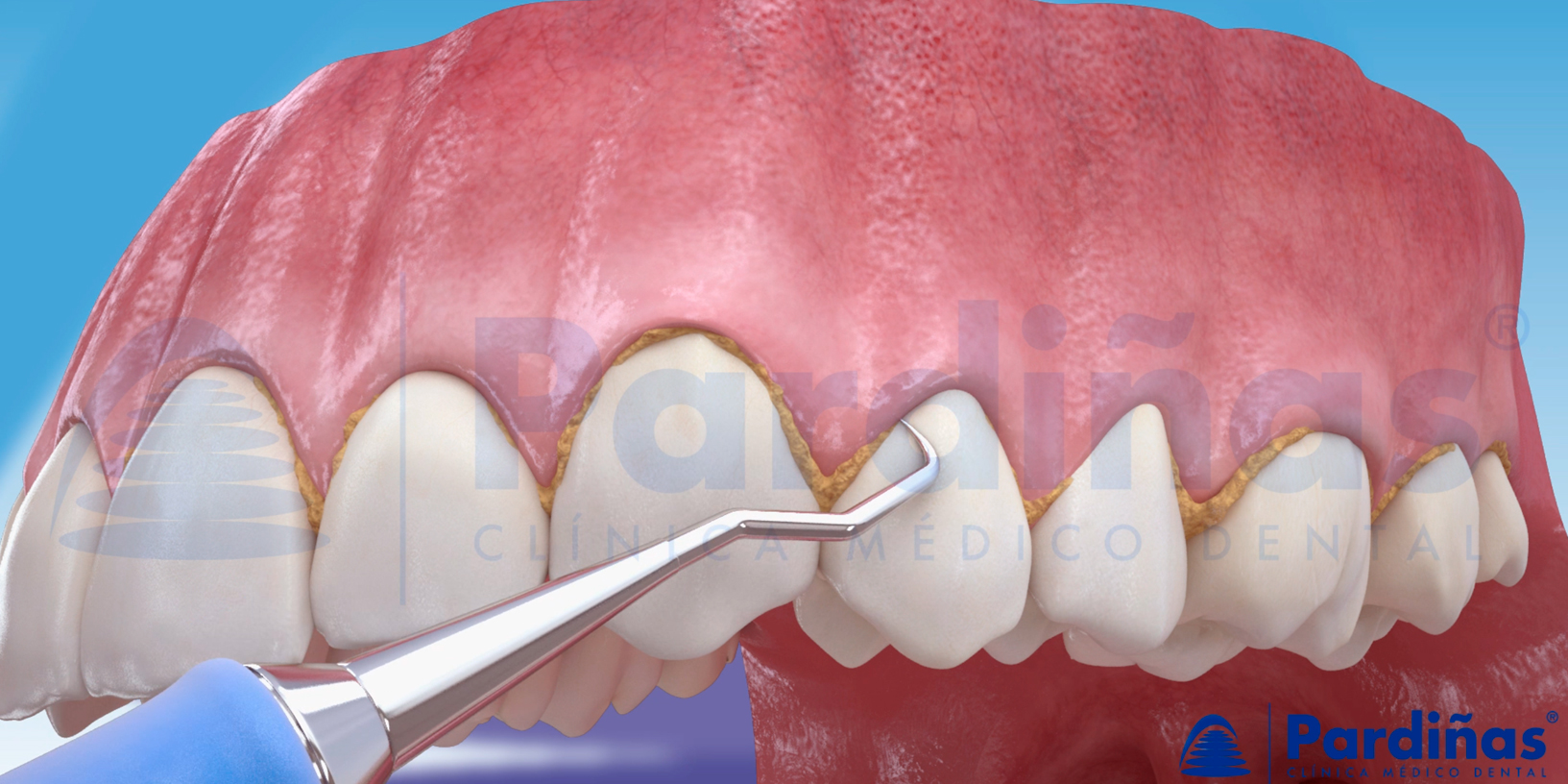Treatment for periodontitis or periodontal disease
The treatment of periodontitis depends on the progress and severity of it. Here we explain how to treat periodontal disease.
The treatment for periodontitis can vary depending on the severity of the disease. When the diagnosis is made through medical history and a comprehensive periodontal study (including radiographic series, probing, gingival recessions, mobility), conclusions are drawn regarding the prognosis and treatment. Every mouth is unique, but basically, the complete treatment consists of four phases:
A) Hygiene phase - Teeth cleaning or dental prophylaxis
In the hygienic phase, a professional teeth cleaning is carried out with which thick tartar is removed and the patient is instructed in proper brushing techniques and auxiliary methods (interproximal brushes, dental floss, irrigators, etc.).

B) Anti-inflammatory phase
It involves the removal of subgingival tartar and plaque, as well as some infected tissue from the gums. Various instruments such as curettes and ultrasonic devices are used to perform root planing and scaling. This phase is usually done with anesthesia and by quadrants (dividing the mouth into four parts). If the disease is moderate, this phase and periodic maintenance (regular professional cleanings) may be sufficient.
C) Surgical phase in the periodontal disease treatment
Once the gums are free of inflammation, it is necessary to eliminate periodontal pockets where bacteria accumulate. The goal of surgery is to remove periodontal pockets, which are spaces that form between the gum surface and the bone surrounding the teeth, and to properly smooth the bone surrounding the roots. At the bottom of these pockets, there is a microbial metabolism that perpetuates the process because it is impossible to reach the bottom of the deep pockets with conventional oral hygiene methods.
Then, the gum is sutured over a healthy bone base, leaving little to no space between the gum and the bone. This way, the patient can adequately access the spaces and clean them effectively. In some cases, antibiotics may be prescribed to control bacterial infection and reduce inflammation.
It is evident that if the disease is advanced with significant loss of maxillary bone around the tooth roots and significant mobility, little can be done to maintain those teeth. However, if the bone loss is incipient or moderate, the treatment usually achieves exceptional results in maintaining those teeth in long-term health, provided that the patient understands the problem and carries out strict plaque control at home.
D) Maintenance and home care after periodontitis treatment
After treatment, it is essential to maintain good oral hygiene and regularly visit the dentist for follow-up and periodic periodontal prophylaxis.